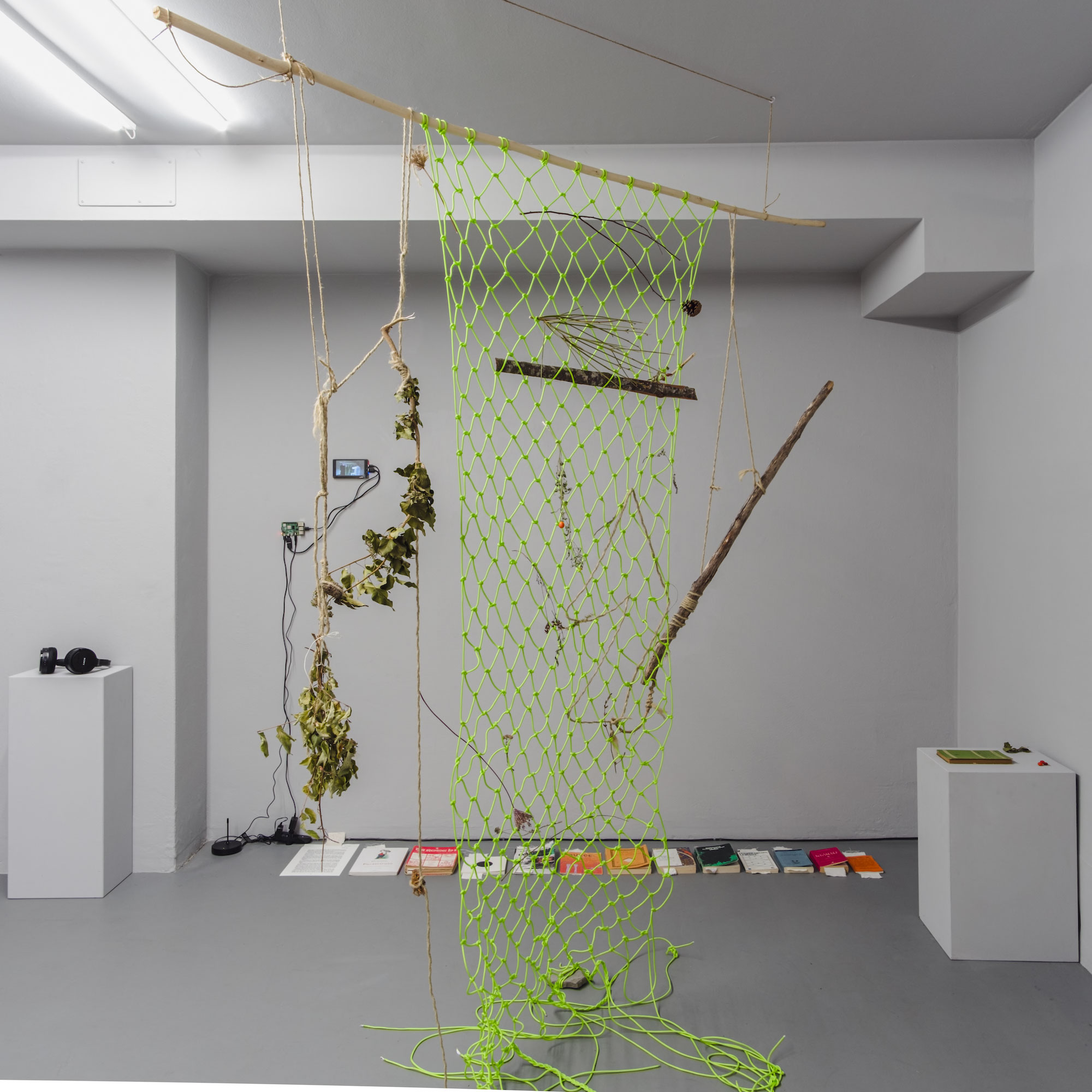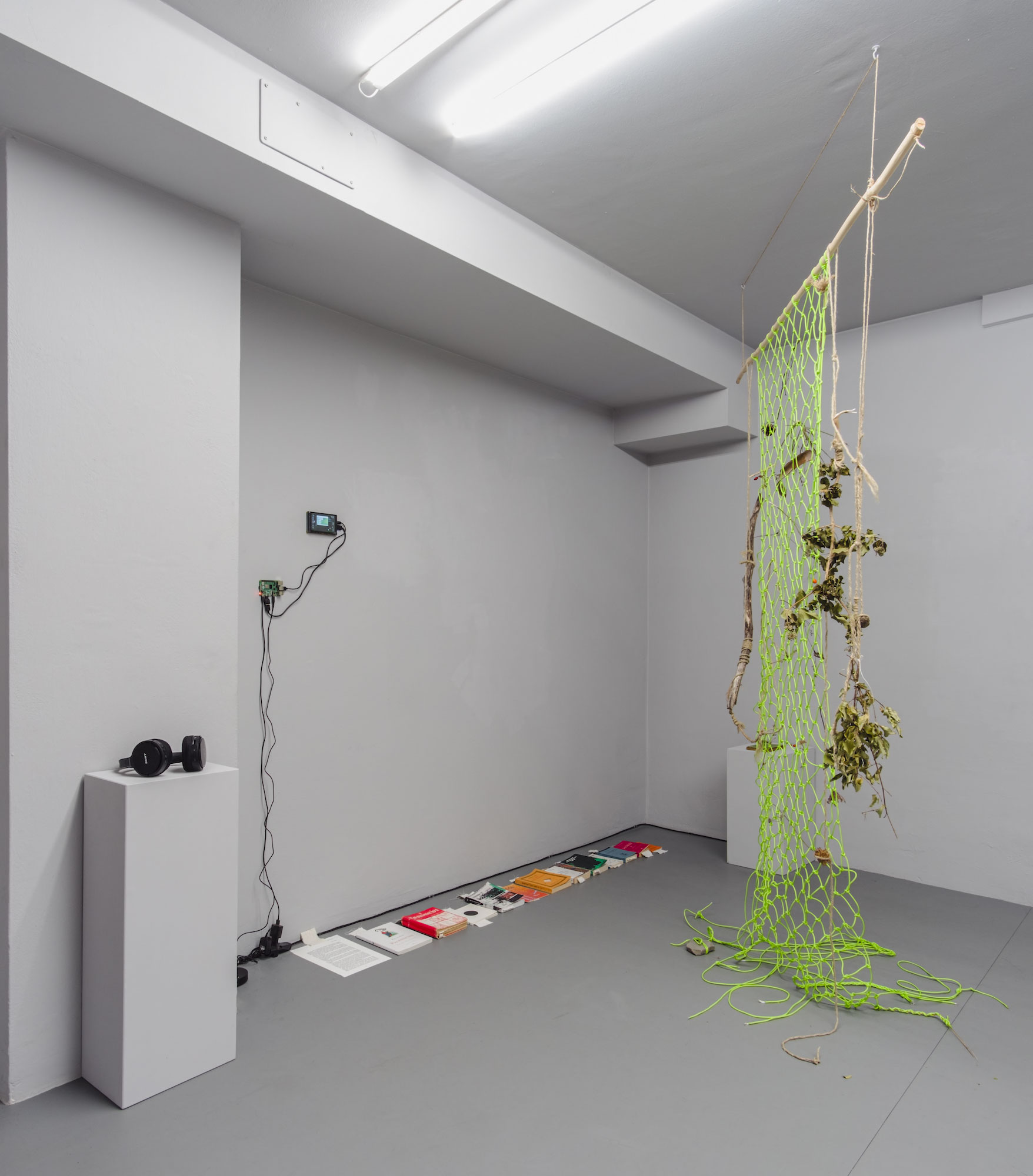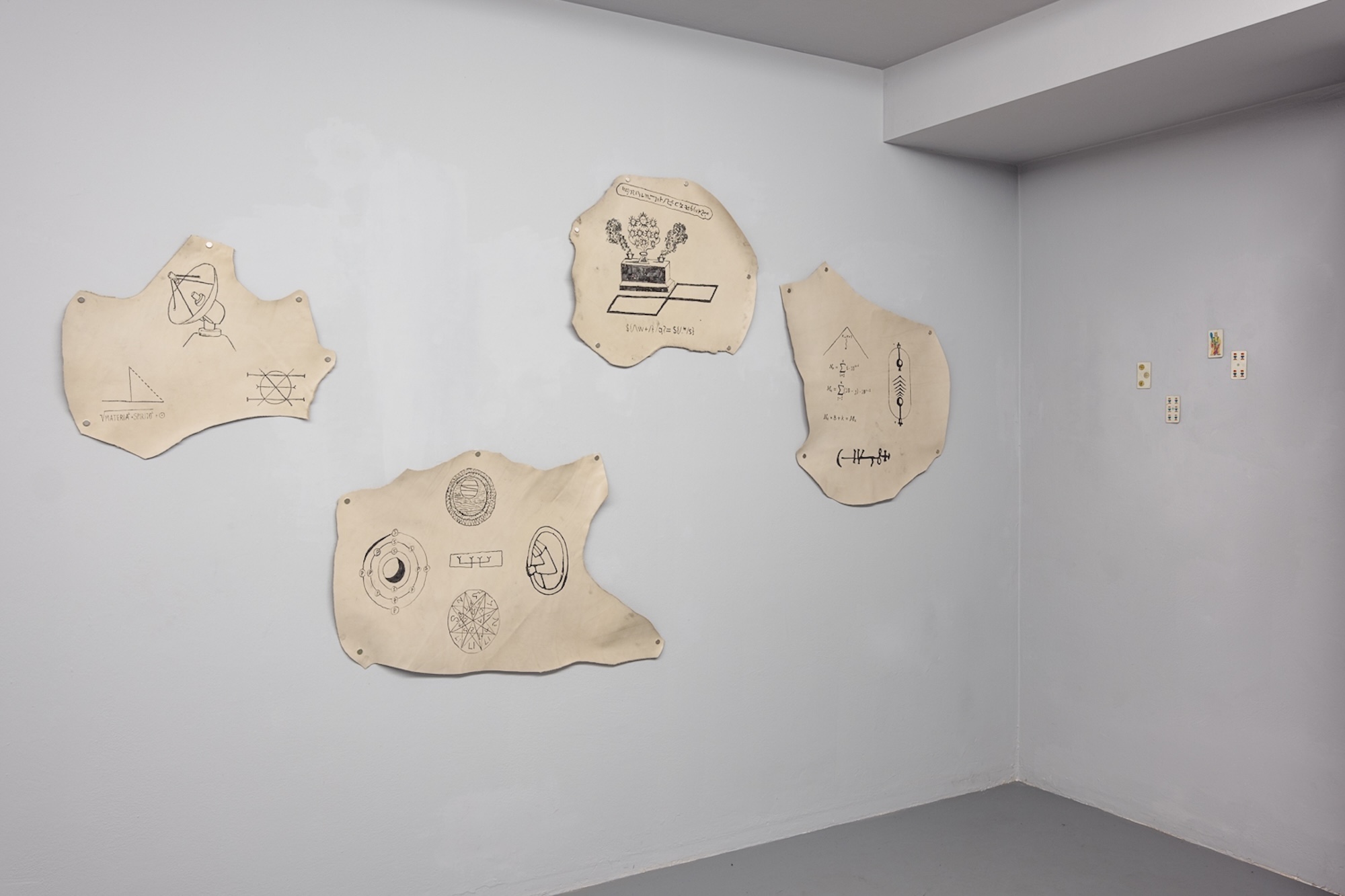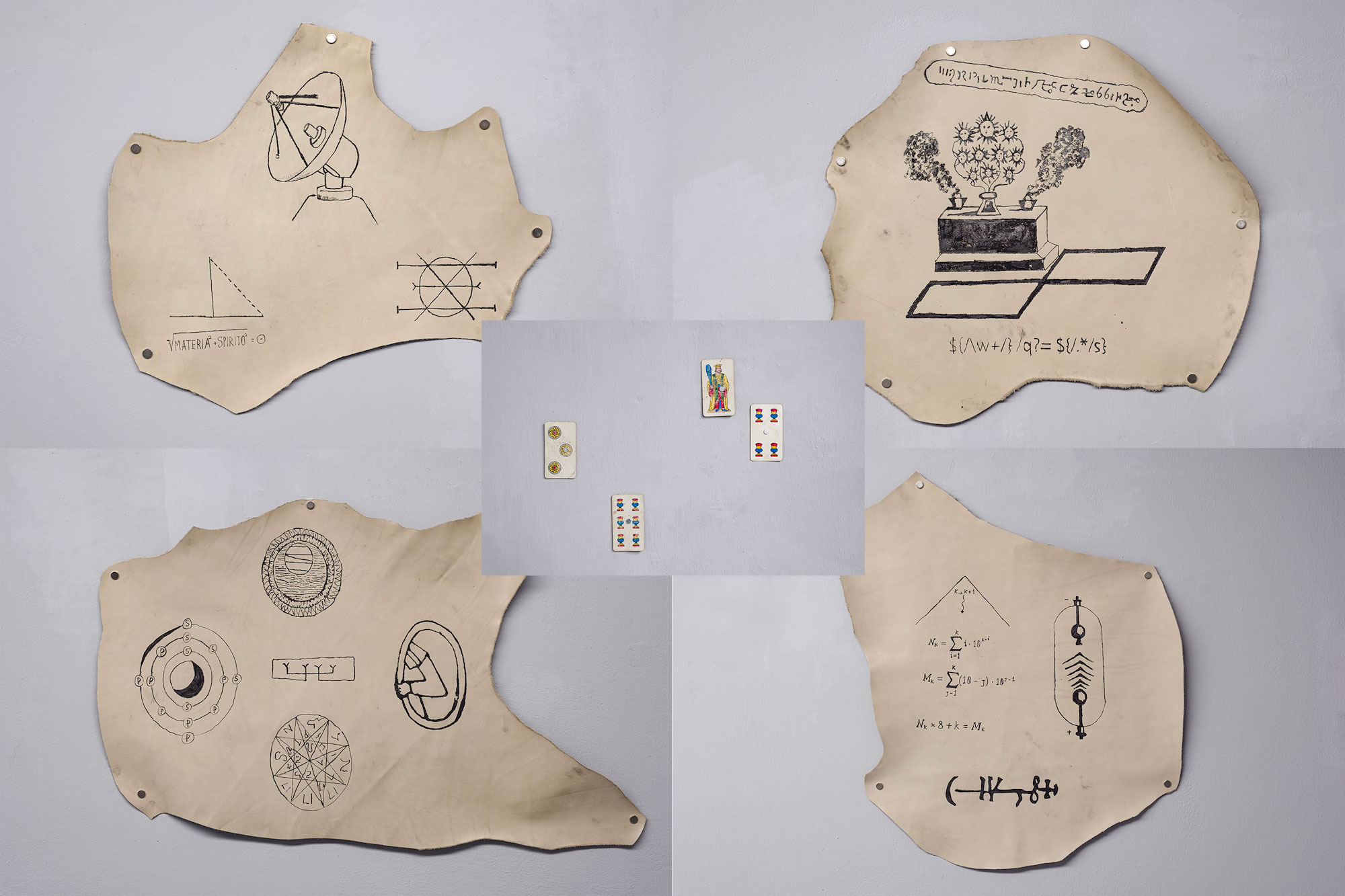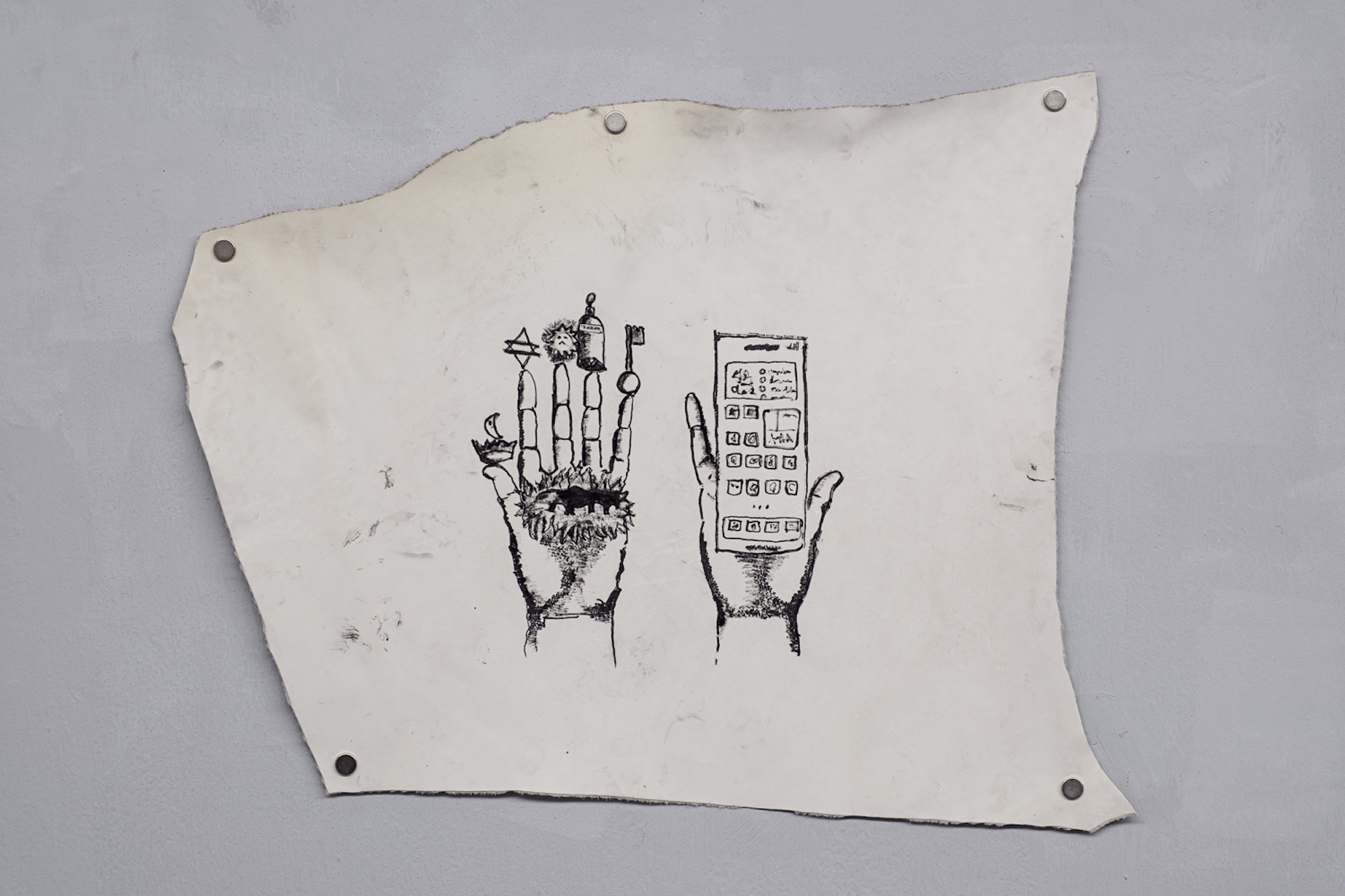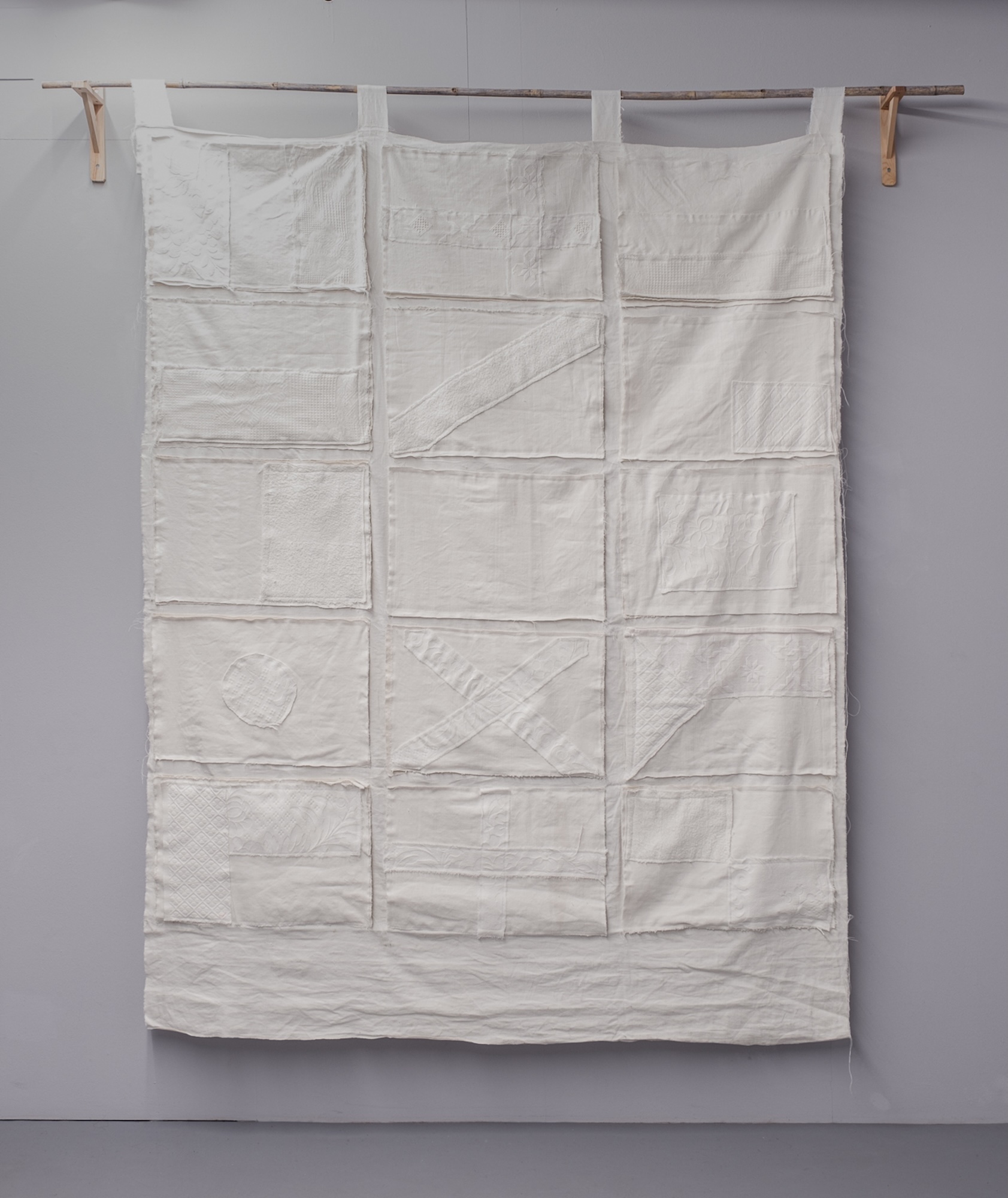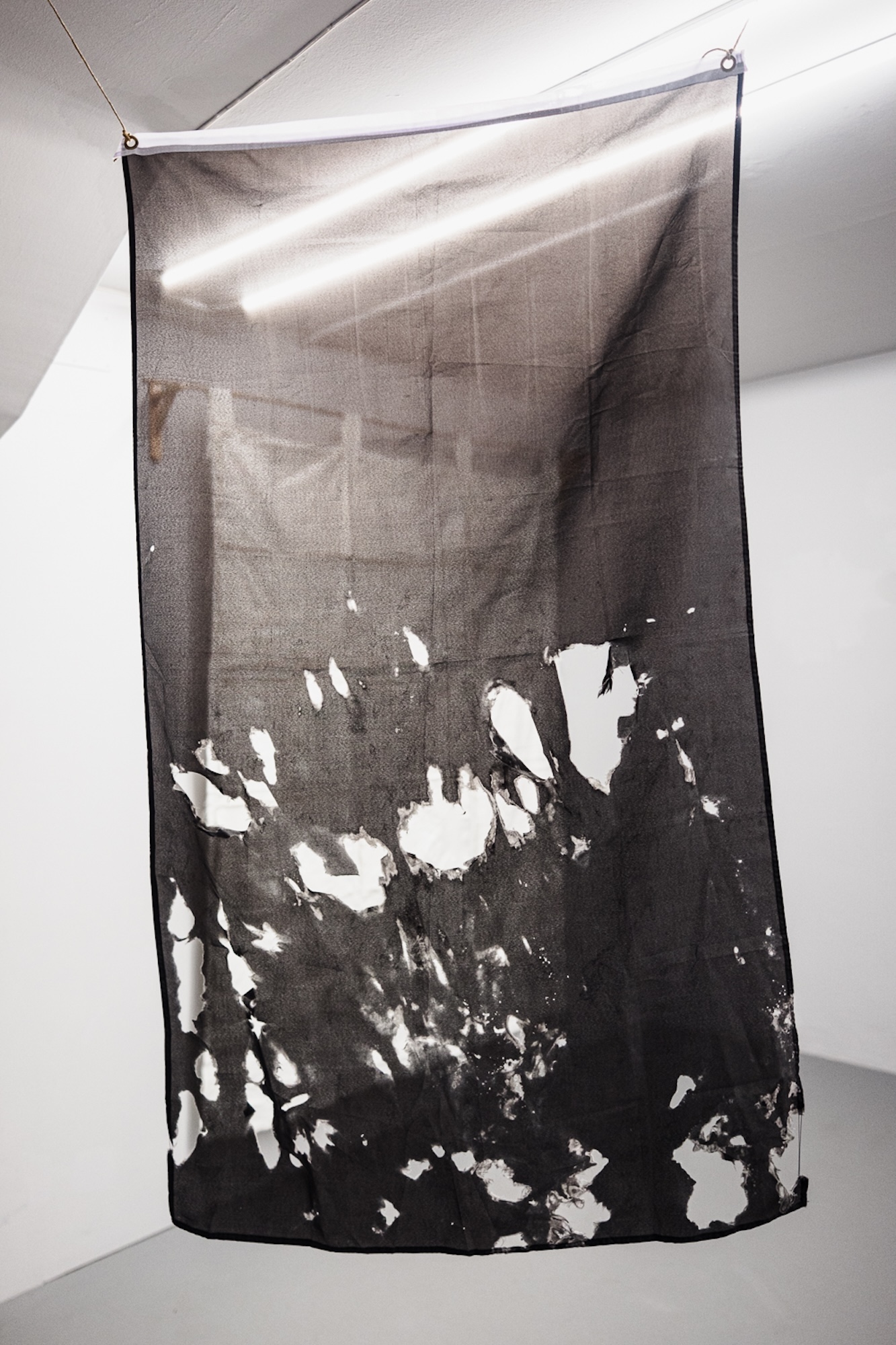Un asterisco ed una parola con un trattino, con un suono che conduce alla lingua inglese, sono i punti di partenza della programmazione artistica di SMDOT/Contemporary Art che vedrà coinvolti cinque artisti, con le loro relative personali nell’arco temporale del 2024.
L’asterisco che solitamente rimanda ad una ulteriore spiegazione diventa l’inizio e RE-SIGNATION, con il suo riferimento italiano RAS-SEGNAZIONE, rappresenta il piano concettuale all’interno del quale i singoli artisti coinvolti inseriranno la loro ricerca. L’obiettivo ambizioso è quello di sviluppare la feconda intuizione del filosofo italiano Franco Berardi “Bifo” descritta nel suo libro “DISERTARE” pubblicato nel 2023, dove l’invito è provare a deviare da una traiettoria depressiva, verso la quale stiamo andando, ad una di ri-significazione. L’invito è quello di leggere il libro, in cui compaiono per la prima volta queste parole, in modo da avere più chiaro l’interessante percorso. In questo contesto c’è una mia appropriazione dell’uso creativo fatto della parola RAS-SEGNAZIONE che con l’inserimento del trattino inventa un nuovo significato e lo avvicina alla parola RE- SIGNATION con l’obiettivo attraverso la pratica artistica di cogliere l’invito di “Bifo” ad abbandonare i meccanismi abituali nei quali ci siamo incastrati ed attribuire nuovi significati ai segni ed ai simboli che ci circondano in un orizzonte totalmente cambiato. Siamo vissuti, fino alla fine del secolo scorso, guardando e muovendoci sempre più velocemente con un’idea di progresso infinito, quindi con l’idea di un orizzonte sempre in continuo allontanamento, oggi, abbiamo compreso che il nostro orizzonte è un orizzonte finito, quindi è tempo di modificare le “regole del gioco” altrimenti saremo tutti perdenti. Filosofia ed arte, possono essere due vettori di questo cambiamento,
stimolando quella minoranza di individui disponibili ad accettare questa metamorfosi ed a costruire un nuovo milieu.
Il progetto espositivo di Federico Poni è il quinto e conclusivo appuntamento del ciclo RE-SIGNATION che mi ha visto come curatore dando vita all’intera programmazione dell’anno 2024 di SMDOT/Contemporary Art.
“SOLVE et COAGULA”, è il titolo della mostra, ma soprattutto il motto degli alchimisti utilizzato per descrivere il processo di trasformazione e di evoluzione. “Sciogli e coagula” nella sua sequenza, evidenzia, in qualche modo, il percorso svolto durante questi mesi ed i lavori inediti di Federico sollecitano a compiere un’ulteriore riflessione sui diversi principi di realtà che creano il mondo, ponendo le basi per nuove, possibili, sintesi (coagula). Nelle società antiche, una cosmogonia basata sulla magia offriva un quadro in cui la realtà era un’interazione dinamica di forze, intrisa di spiriti, dei ed energie mistiche che modellavano ogni aspetto della vita. L’universo era percepito come un’entità vivente, dove ogni cosa – oggetti, persone e luoghi – possedeva un significato o potere intrinseco. In questa prospettiva le persone si relazionavano al mondo, vedendolo non come uno sfondo statico per la vita umana ma come un partecipante attivo in essa. La ricerca scientifica e i progressi tecnologici hanno rimodellato la civiltà, questa visione del mondo basata sulla magia è stata in gran parte sostituita da una cosmogonia tecnica, radicata nell’osservazione empirica e nella quantificazione del mondo naturale. Questo cambiamento è stato rivoluzionario; ha consentito all’umanità di sfruttare i poteri della natura in modi prima inimmaginabili. Eppure, in questa trasformazione, qualcosa è andato perduto: l’incanto, il mistero e il senso di interconnessione offerti dalle cosmogonie basate sulla magia. Quando le spiegazioni tecniche divennero il quadro primario per comprendere la realtà, il mondo divenne, in un certo senso, “disincantato”, visto come un meccanismo da analizzare e manipolare piuttosto che come un’entità permeata di significato intrinseco.
Immaginare, oggi, una prospettiva basata sulla magia non necessariamente nega il valore della comprensione scientifica. Potrebbe invece offrire un modo complementare di sperimentare la realtà, che abbraccia meraviglia e riverenza insieme alla ragione e all’analisi. Questo approccio è in linea con le idee di pensatori come Carl Jung, che vedevano la mitologia e gli archetipi come espressioni di un inconscio collettivo, un livello più profondo dell’esperienza umana che opera oltre la portata del pensiero razionale. Jung credeva che riconnettersi con questi antichi simboli e archetipi potesse aiutare le persone a trovare significato e coerenza in un mondo sempre più dominato da considerazioni tecniche. Una possibilità per riscoprire una cosmogonia basata sulla magia sta nel reinterpretare miti e simboli antichi attraverso una lente moderna. Queste idee potrebbero essere viste come metafore di aspetti fondamentali dell’esistenza che la scienza moderna sta appena iniziando a esplorare, come la dualità di materia e antimateria o il delicato equilibrio delle forze che governano le strutture cosmiche.
In questo senso, una cosmogonia basata sulla magia potrebbe fungere da ponte tra il conosciuto e l’ignoto, offrendo una visione del mondo che riconosce i limiti della conoscenza umana e allo stesso tempo ci invita ad avvicinarci all’esistenza con un senso di stupore e umiltà. Questa cosmogonia incoraggerebbe una relazione con il mondo che sia partecipativa piuttosto che di sfruttamento, in cui gli esseri umani si vedono come co-creatori in un universo misterioso e in evoluzione. Una tale prospettiva potrebbe mitigare lo strapotere della cosmogonia tecnica, che spesso promuove una visione della natura come oggetto da controllare o dominare.
L’intelligenza artificiale, l’ingegneria genetica e la realtà virtuale hanno creato nuovi strati di esistenza che sfidano la comprensione tradizionale della realtà e dell’identità. In mezzo a questa trasformazione, c’è il desiderio di qualcosa di più: una comprensione della realtà che non solo spieghi ma anche ispiri.
Gli artisti visivi contemporanei come Federico Poni creano spazi ed esperienze in cui gli spettatori possono esplorare il proprio potenziale di “magia”, come impegno disciplinato e intenzionale con il mondo. Questa magia sta nella capacità di vedere oltre la superficie, di accogliere simboli ed esperienze come significato e di avvicinarsi alla realtà come qualcosa che può essere modellato (rimodellato) attraverso la percezione, l’intenzione e la comprensione. I lavori sono realizzati usando tecniche (non tecnologie), come cucire, tatuare, annodare, dialogare, fanno eco all’immagine della creazione di cosmi e ci invitano a stringerci la mano in un ipotetico cerchio magico all’interno del quale cercare la via di un reincanto del reale recuperando, in questo modo, la singolarità della possibilità del potere creativo, troppo spesso, delegato completamente alla dialettica egemonica del progresso scientifico, provando a diventare maghi accurati. La pratica di Federico attualizza il motto “SOLVE et COAGULA” in “Percepire e Riformulare” con lo scopo di coltivare la consapevolezza e la capacità di rimodellare la propria comprensione della realtà, riflettendo le trasformazioni interne ed esterne centrali nella loro pratica. “Percepire e Riformulare” può diventare il mantra moderno del re-incanto, una filosofia pratica per restituire meraviglia e significato in un’epoca che spesso sacrifica entrambi per amore dell’efficienza e del controllo. Sfida le persone a guardare oltre i limiti del conosciuto e ad abbracciare i misteri della vita con coraggio, creatività e compassione. Per il mago accurato, quindi, questa formula è più di un semplice motto; è uno stile di vita, un viaggio continuo verso una realtà vibrante, significativa e infinitamente profonda.
Stefano Monti
An asterisk and a word with a dash, with a sound evocative of the English language, are the starting points of the artistic programming of SMDOT/Contemporary Art that will involve five artists, with their solo shows throughout 2024.
The asterisk, which normally leads to a further explanation, here marks the beginning, and RE-SIGNATION, referring to the Italian term RAS-SEGNAZIONE, represents the conceptual field within which the individual artists’ research will unfold. The ambitious goal is to build on the fruitful intuition of the Italian philosopher Franco Berardi, also known as “Bifo”. In “DESERTING”, his 2023 book, he advocates for all of us to try to deviate from the current depressive trajectory, towards one of re-signification. The invitation is to read the book, in which these words appear for the first time, so as to be clearer about this interesting path. In this context, my appropriation of the creative use of the word RAS-SEGNATION brings it closer to the word RE-SIGNATION with the insertion of the hyphen: it invents a new meaning with the objective of accepting Bifo’s invitation through artistic practice, to abandon the habitual mechanisms we are stuck in and attribute new meanings to the signs and symbols that surround us in a totally changed landscape. Until the end of the last century, we were watching and moving faster and faster with an idea of infinite progress, that is with the idea of an ever-expanding horizon. Today, we have understood that our horizon is a finite one, so it is time to change the “rules of the game” otherwise we will all be losers. Philosophy and art can be agents of this change,
inspiring the minority who are willing to embrace this metamorphosis and create a new milieu.
Federico Poni’s exhibition project is the fifth and final appointment of the RE-SIGNATION cycle that saw me as curator, giving life to the entire 2024 programme for SMDOT/Contemporary Art.
“SOLVE et COAGULA”, is the title of the exhibition, but most significantly it is the motto of the alchemists used to describe the process of transformation and evolution. The sequence “Dissolve and coagulate” somehow underlines the journey taken over the last year, Federico’s previously unseen works urge us to a further reflection on the different principles of reality that create the world, laying the foundations for new, possible, syntheses (coagula).
In ancient societies, a cosmogony based on magic offered a framework wherein reality was a dynamic interaction of forces, imbued with spirits, gods, and mystical energies that shaped every aspect of life. The universe was perceived as a living entity, where everything – objects, people and places – possessed an intrinsic meaning or power. In this perspective, people related to the world, seeing it not as a static background for human life but as an active participant in it. Scientific research and technological advances have reshaped civilization and this magic-based worldview has largely been replaced by a technical cosmogony, rooted in empirical observation and quantification of the natural world. This was a revolutionary change; it has allowed humanity to harness the powers of nature in ways that were previously unimaginable. And yet, something has been lost in this transformation: the enchantment, mystery and sense of interconnectedness offered by magic-based cosmogonies. When technical explanations became the primary framework for understanding reality, the world became, in a sense, “disenchanted,” seen as a mechanism to be analysed and manipulated rather than as an entity with its own intrinsic meaning.
Imagining a perspective based on magic today does not necessarily negate the value of scientific understanding. It could instead offer a complementary way of experiencing reality, which embraces wonder and reverence along with reason and analysis. This approach is in line with the ideas of thinkers such as Carl Jung, who saw mythology and archetypes as expressions of a collective unconscious, a deeper level of human experience that operates beyond the reach of rational thought. Jung believed that reconnecting with these ancient symbols and archetypes could help people find meaning and coherence in a world increasingly dominated by technical considerations. One way to rediscover a cosmogony based on magic is reinterpreting ancient myths and symbols through a modern lens. These ideas could be seen as metaphors for fundamental aspects of existence that modern science is just beginning to explore, such as the duality of matter and antimatter or the delicate balance of forces that govern cosmic structures.
In this sense, a magic-based cosmogony could act as a bridge between the known and the unknown, offering a view of the world that recognises the limits of human knowledge while inviting us to approach existence with a sense of awe and humility. This cosmogony would encourage a relationship with the world that is participatory rather than exploitative, in which humans see themselves as co-creators in a mysterious and evolving universe. This perspective could mitigate the overwhelming power of technical cosmogony, which often promotes a vision where nature is seen as an object to be controlled or dominated.
Artificial intelligence, genetic engineering and virtual reality have created new layers of existence that challenge the traditional understanding of reality and identity. In the midst of this transformation, there is a desire for something more: an understanding of reality that not only explains but also inspires.
Contemporary visual artists such as Federico Poni create spaces and experiences where viewers can explore their own potential for “magic,” as a disciplined and intentional engagement with the world. This magic lies in the ability to see beyond the surface, to welcome symbols and experiences as meaning, and to approach reality as something that can be shaped (reshaped) through perception, intention, and understanding. The artworks are made using techniques (and not technologies), such as sewing, tattooing, knotting, dialoguing, echoing the image of the creation of cosmoi and inviting us to shake hands in a figurative magic circle. Within this circle we can seek to re-enchant reality, thus recovering the singularity of the possibility of creative power, something which is too often completely delegated to the hegemonic dialectic of scientific progress, trying to become magicians of precision. Federico’s art practice makes the motto “SOLVE et COAGULA” topical, turning it into “Perceiving and Reformulating” with the aim of cultivating awareness and the ability to reshape one’s understanding of reality, reflecting the internal and external transformations central to their practice. “Perceiving and Reformulating” can become the modern mantra for re-enchantment, a practical philosophy to restore wonder and meaning in an age that often sacrifices both for the sake of efficiency and control. It challenges people to look beyond the limits of that which is known and embrace the mysteries of life with courage, creativity, and compassion. For the accurate magician, then, this formula is more than just a motto; it is a way of life, a continuous journey towards a vibrant, meaningful and infinitely profound reality.
Stefano Monti
